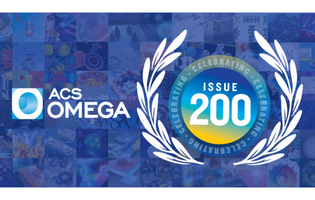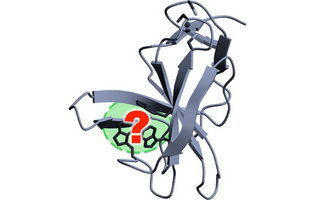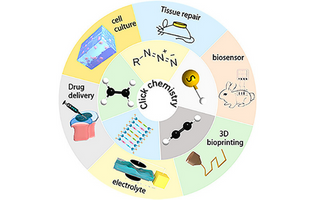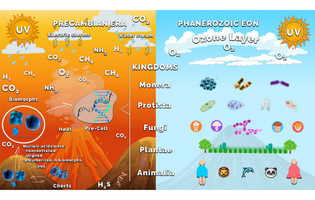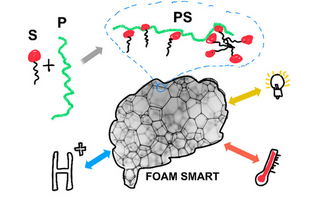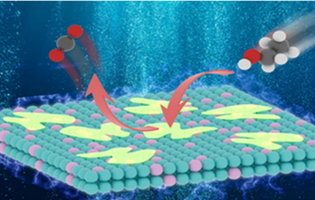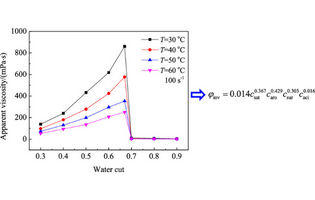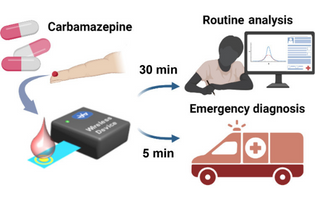What's New
By a happy coincidence, ACS Omega published its 200th issue a week before this year’s International Open Access Week (October 24–30, 2022. This dual celebration gave us an opportunity to reflect on how far we have come as a journal, as well as on the many other opportunities in Open Science that have become available to authors and researchers at ACS Publications since the journal published its first issue.
The applications of analytical sciences in environmental research range from initial detection and quantification of pollutants to extraction and separation of contaminants, to purification and recovery of vital resources and environmental remediation.
This collection of Articles, Reviews, Mini-Reviews, Perspectives, and Letters published in our ACS Omega, Analytical Chemistry, and Environmental Science & Technology highlight the breadth and depth of technical innovation in analytical science underpinning the research being conducted in environmental chemistry and health.
Browse the collection of articles.
Remembering Prof. Maria Cruz Moreno-Bondi
Shortly after making the selection of articles for the Virtual Issue, as a member of our ACS Omega Editorial Advisory Board, Prof. Maria Cruz Moreno Bondi sadly passed away. We wish to mark her life and work with the fond words of some of her closest colleagues.
We are grateful for her contributions to the advancement of analytical science and her attachment to our journal as an active EAB member. We dedicate this Virtual Issue to her.
ACS Omega - In The News
Derek Lowe, in his popular "In the pipeline" blog, published by the Science magazine, mentions an ACS Omega article as part of his take on the status of protein degradation techniques - "A Rather Unwelcoming Degrader Enzyme".
In the original article, the protein cereblon serves as a substrate receptor of a ubiquitin ligase complex that can be tuned toward different target proteins by cereblon-binding agents.
Reference: Birte Hernandez Alvarez*, Marcus D. Hartmann* et al. Chemical Ligand Space of Cereblon, ACS Omega (2018)
The Smithsonian Museum's magazine tells the story of a massive Mammoth bone unearthed by a recent storm in Alaska and discovered by two hikers.
Apparently, this is not the first time the couple has found gigantic fossils: they previously found a 105-pound, 7-foot-long blue mammoth tusk.
Its blue hue comes from the presence of vivianite, a mineral that can form inside a mammoth’s ivory tusks over time. These colorful fossils are exceedingly rare, which can make them lucrative to collectors. The couple hopes to be able to sell it and build a family home with the profit!
Reference: Xuemei He et al. Vivianite and Its Oxidation Products in Mammoth Ivory and Their Implications to the Burial Process, ACS Omega 2021, 6, 34, 22284–22291
Key Journal Metrics
- ACS Omega published 305 articles in October for a total of 3,527 YTD. As compared to the equivalent timeframe in 2021, this represents a 27% increase in published output.
- Articles published by ACS Omega were downloaded 880,130 times in October, which represents a 28.0% increase in usage compared to the equivalent time period in 2021.
Published Issues
Featured Articles
The development of biomedicine presents new challenges and opportunities for hydrogels, and “click” chemistry provides a library of chemical tools for the preparation of various innovative hydrogels, including cell culture, 3D bioprinting, and drug release. This review summarizes several common “click” reactions, including copper-catalyzed azide–alkyne cycloaddition reactions, strain-promoted azide–alkyne cycloaddition (SPAAC) reaction, thiol–ene reaction, the Diels–Alder reaction, and the inverse electron demand Diels–Alder (IEDDA) reaction.
Xin Li and Yuzhu Xiong, Guizhou University, China
ACS Omega 2022, 7, 42, 36918–36928
What was the inorganic structure that allowed the isolation and conservation of the first biomolecules in the existing reduced conditions of the primigenial era? To better understand whether biomorphs could have been the inorganic scaffold that existed in the primigenial Earth, this study synthesizes calcium, barium, and strontium biomorphs in the presence of genomic DNA in conditions emulating the atmosphere of the Precambrian era. The results showed, for the first time, the formation of the kerogen signal, a marker of biogenicity in fossils.
Mayra Cuéllar-Cruz*, Selene R. Islas, Norma Ramírez-Ramírez, Mario Pedraza-Reyes, and Abel Moreno*
ACS Omega 2022, 7, 42, 37410–37426
This review describes how liquid foams are stabilized by polyelectrolyte/surfactant (PS) complexes in aqueous solution. These PS complexes potentially open up new opportunities to develop new intelligent dispersed materials with potential in many fields, such as the oil industry, in environmental remediation, and the pharmaceutical industry. However, much work must be done to understand the mechanism involved in the stabilization of foams with PS complexes.
Hernán A. Ritacco, Universidad Nacional del Sur (UNS), CONICET, Argentina
ACS Omega 2022, 7, 41, 36117–36136
PdPb nanocrystals have drawn considerable attention due to their excellent catalytic properties, while their practical applications have been impeded by the severe degradation of activity, which is caused by the adsorption of intermediates (especially CO) during the operation. Herein, the authors first present porous PdPb alloys with the incorporation of amorphous Pb(OH)2 species as highly active and stable electrocatalysts.
Jialu Huang et al. Nantong University, China
ACS Omega 2022, 7, 40, 35720–35726
Based on the correlation between geological characteristics and aquifer water abundance, this paper proposed an aquifer water abundance prediction model based on a cloud model that improved combination weighting. The model was based on the idea of game theory, combined the analytic hierarchy process (AHP) and the entropy weight method, and introduced the cloud model evaluation method.
Wenju Cheng et al., Shandong University of Science and Technology, China
ACS Omega 2022, 7, 40, 35840–35850
In this work, a predictive model for the phase inversion point of crude oil emulsions was proposed by considering four parameters that directly affect the emulsification characteristics of the crude oil. The results reported in this work may be helpful in the development of transportation technologies used in mining processes.
Haijun Luo et al., Northeast Petroleum University, China
ACS Omega 2022, 7, 43, 39136–39146
Monitoring the anti-epileptic drug carbamazepine (CBZ) is crucial for proper dosing, optimizing a patient’s clinical outcome, and managing their medication regimen. Due to its narrow therapeutic window and concentration-related toxicity, CBZ is prescribed and monitored in a highly personalized manner. This paper presents a conformation-switching electrochemical aptasensor for detecting CBZ; this conformation-changing aptamer provides a “sample-to-answer” readout without secondary labeling, as needed in many other affinity assays.
Saeromi Chung, Naveen K. Singh, Valentin K. Gribkoff, and Drew A. Hall*
ACS Omega 2022, 7, 43, 39097–39106
Previous Newsletters
Click below to view a previous ACS Omega Monthly Update
© 2024 American Chemical Society, 1155 16th St NW, Washington, DC 20036, USA. View our Privacy Policy



